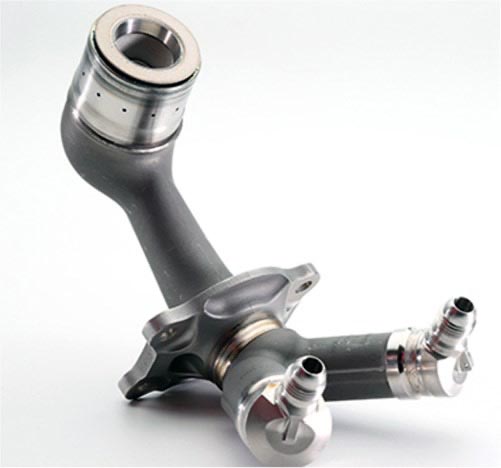- After nearly four decades, 3D printing has moved far beyond product prototyping for Research & Development initiatives.
- 3D printing within the manufacturing industry, also called additive manufacturing, will soon affect many of the products we use every day.
- In addition to ongoing technological advancements, manufacturers are realizing that additive manufacturing offers several key benefits.
By Carl Doty
Introduction
We’ve already seen a momentous amount of digital disruption in a variety of industry verticals, including retail, media, and financial services. These changes were only accelerated by COVID-19 and show no signs of slowing even after the pandemic subsides. The digital disruption that has already permanently changed a number of markets is now poised to upend the manufacturing industry. 3D printing will fuel a great many changes in the manufacturing world, and this transformation is decades in the making.
Why 3D Printing?
This might be hard to believe, but 3D printing is a technology category that first appeared on the scene nearly 40 years ago. It was back in 1983 when Chuck Hull (founder of 3D Systems) created the first-ever 3D printed part, and he filed a patent for his Stereolithography Apparatus (SLA) a year later. After nearly four decades, 3D printing has moved far beyond product prototyping for Research & Development initiatives. Today, the technology is used for a variety of real-world applications to produce end-use parts at scale.
3D printing within the manufacturing industry, also called additive manufacturing, will soon affect many of the products we use every day. Recent examples of additive manufacturing span across a wide variety of industries and applications, including polymer-based parts used in consumer apparel, titanium surgical implants, metal parts in jet engines (see image below), and Boeing wing hinges.

3D-printed fuel nozzle for aircraft engines. Source: GE Additive.
What Has Changed?
So what has changed since Chuck Hull invented Stereolithography for rapid prototyping? First, in keeping with Moore’s Law, costs have plummeted even as hardware and software capabilities have advanced exponentially. Second, continuous innovations in materials science enable manufacturers to print new polymer- and metal-based end-use components at scale while meeting/exceeding the highest quality standards.
In addition to these technological advancements, though, manufacturers are realizing that additive manufacturing offers the following key benefits:
- It reduces barriers to entry and time to market. The cost of capital for a complete 3D printing system can be acquired for a fraction of the cost of standing up a traditional manufacturing facility. Some metal 3D printers can even be used in an office environment without special ventilation or specialized waste management requirements. This makes it possible for smaller, nimbler competitors to enter new markets quickly and efficiently. Furthermore, printing end-use parts decreases the lead time required to create tooling on the factory floor, as engineers can print custom fixtures and rigs needed for new products in days instead of weeks or months.
- It increases part performance. 3D printing enables the manufacture of parts that were previously impossible to make, creating an opportunity to gain tolerances to repeated stress and strain. During a GE Additive event a few years ago, former CEO John Flannery stated that engineers can now “design without limitations.” As an example of such a claim, Optomec has printed electronic strain sensors onto turbine blades that can be scanned during maintenance cycles. Rather than replacing blades at specified intervals, Optomec’s customer can now increase the life of their turbine blades and simply scan the sensors to monitor performance and replace them only when scientific measurements dictate that it’s necessary.
- It reduces material waste. As its name suggests, additive manufacturing constructs an object by adding material layer by layer instead of subtracting it. This enables a dramatic reduction in wasted material, which is invaluable to an industry like aerospace (in which 30% of the material can be wasted with parts manufactured by traditional methods). Additive manufacturing also allows more complex, organic shapes to be printed as a single object through generative CAD software. In addition to offering greater design freedom, the real power of generative design is that it uses AI to optimize part design with less material and higher strength characteristics.
- It enables assembly consolidation. Additive manufacturing will also unlock the ability to consolidate parts on complex mechanical systems because multiple parts that typically work together can now be printed as one. This is particularly attractive in the automotive, aerospace, and agriculture industries where large, complex machines are frequently used and parts management is a significant cost center for owners and manufactures alike.
- Enables mass customization. Much like we see the enablement of mass-customization in the consumer apparel space thanks to direct-to-garment (DTG) printing, the flexibility of 3D printing will enable firms to print customized parts for little extra cost. For example, Japanese carmaker Daihatsu uses Stratasys 3D printers to let its customers pick the color and texture of a custom-effect skin on their car.
The Bottom Line
 There is no doubt that additive manufacturing is already reshaping (pun intended!) the way that physical products are made today. Despite this, there are still people who think that 3D printing is little more than a niche technology in search of a problem to solve. Hopefully, the short list of benefits and examples in this piece will convince the doubters to rethink their conclusions and maybe explore some adjacent possibilities. In the meantime, this exciting space will likely witness additional innovations as we move toward the future.
There is no doubt that additive manufacturing is already reshaping (pun intended!) the way that physical products are made today. Despite this, there are still people who think that 3D printing is little more than a niche technology in search of a problem to solve. Hopefully, the short list of benefits and examples in this piece will convince the doubters to rethink their conclusions and maybe explore some adjacent possibilities. In the meantime, this exciting space will likely witness additional innovations as we move toward the future.
Carl Doty is a recognized thought leader with more than 20 years of experience helping businesses leverage technology to drive growth. Prior to joining Keypoint Intelligence, Carl was Vice President & Group Director at Forrester where he co-founded the customer intelligence practice and led the global marketing & advertising technology research teams. Carl began his career in health IT at Tufts Health Plan and has held various roles at a marketing agency and multiple startups. He studied Civil Engineering at Tulane University, and holds a Bachelor’s Degree in Engineering Management from the University of Vermont.










Discussion
By Wade Link on Sep 02, 2021
It would have been nice to hear the contributions AI has to this field of engineering. Designing lighter and stronger parts using organic structures that were previously impossible to manufacture.
By Carl Doty on Sep 03, 2021
Wade - I'm in full agreement. In a past life, I've written about how AI-enabled generative design software helps engineers accomplish precisely what you describe. In fact, in the second bullet above when I said "3D printing enables the manufacture of parts that were previously impossible to make...", that's exactly what I had in mind but didn't explicitly mention the software because I was trying to keep the scope of this article contained. I do appreciate your comment. I hope to explore this topic in depth in a future piece.
By Pete Basiliere on Sep 07, 2021
As I put it, “Shift from design for ideal manufacturing to manufacturing the ideal design.”
https://www.fabbaloo.com/2018/05/interesting-thoughts-on-3d-print-business-models
Discussion
Join the discussion Sign In or Become a Member, doing so is simple and free